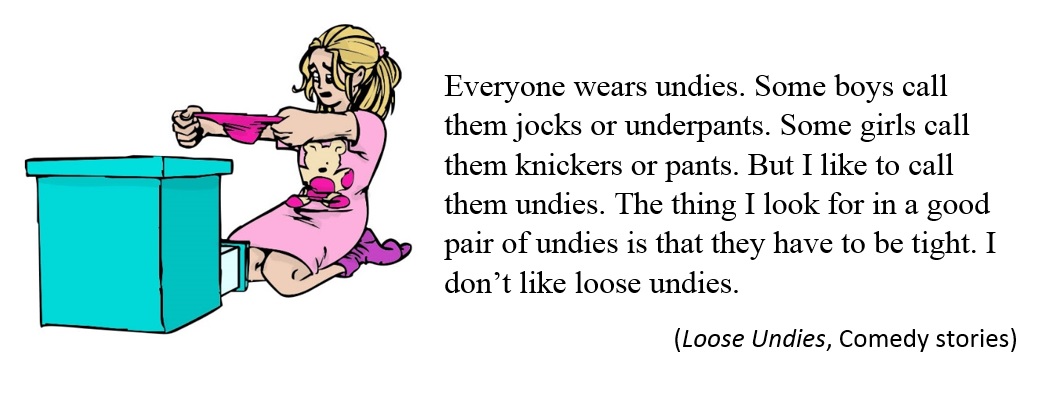
This short story is obviously written in simple language. The author tells a fun tale, in just 620 words, about a girl caught in the embarrassing situation of undies that keep falling down while she’s at school.
The story is meant to be amusing. But the essential question for teachers (and parents) is what sort of child could comfortably read it? What is its ‘reading difficulty’, or ‘readability’?
The answer is more complicated than you’d think.
Ways of measuring reading difficulty have been around for decades. Two of the most famous are Flesch – which gives this story 2.5 (Grade or Year 2.5) – and Lexiles – which give the story 480 (in their scale, Year 2 or 3). So far, so good.
Both are American schemes. Flesch, invented in the 1950s by Dr Rudolf Flesch of Columbia University, cross references sentence length and word length to produce a ‘grade’ or year level average. As an example, the sentence "The Australian platypus is seemingly a hybrid of a mammal and reptilian creature" is rated at Year 11.3 as it has 24 syllables and 13 words – in other words a very dense piece of text. The Flesch formula has been repeatedly checked and returns an overall reliability well above 93%.
Lexiles, launched in 1989, and widely used by schools both in the USA and Australia, was developed by Metametrics and uses a database of 100,000 published titles to give a ‘band’ level in their unique scheme.
The other famous international scheme is Reading Recovery. It originated with Dr Marie Clay (a New Zealander), who was trying to help children in the early years struggling to read. In the 70s, she posited a scale from 1-30 for kids in the first few years of reading instruction. In this scheme, 1 was ultra simple (two word sentences), and 30 was approximately what average children in Grade 2 could reasonably handle. So ‘Bad Cat’, in the Easy Readers phonics set, scores just RR 5.
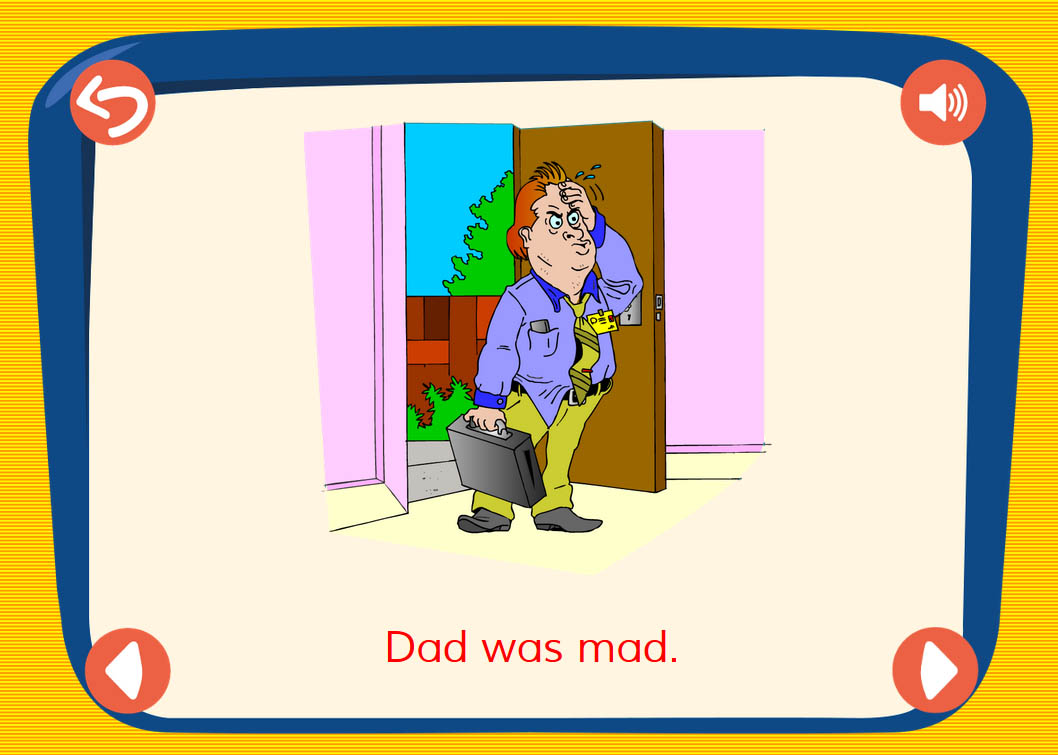
You can readily see the difference in the level of difficulty between Loose Undies and Bad Cat.
There are other schemes, such as the Fry Readability Graph, the Gunning test, the SMOG test, and others.
And then there are those tied to commercial programs. The most celebrated of these is PM Reading Levels, based on the American Cengage/Nelson set of early readers.
Because children at different levels of the primary school will be reading at different levels of difficulty, some at their ‘grade average’ (eg typical skills for a Grade 2), some either above or below the average - a reading library or scheme has to have a way of mapping readability.
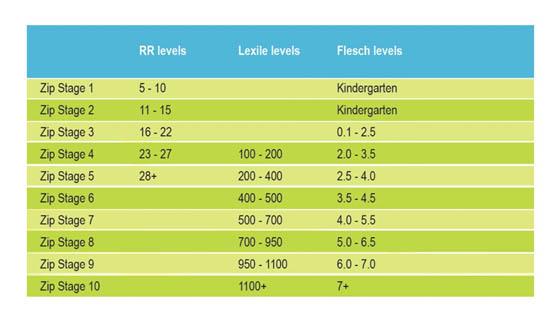
For Ziptales, this is a 10 band scheme. Because it needs to answer teachers’ needs, it references three of the best (non proprietary) international readability measures – Reading Recovery, Lexiles and Flesch.
All Ziptales stories are mapped to the three measures, ensuring an element of familiarity for teachers. The matrix itself – the Ziptales reading scheme – is however unique.
The ten ‘Zip Stages’ (beginning readers through to highly skilled readers) does not reference year levels, because reading ability is not dependent on grades. A Year 3 might have a reading age of Grade 5 or 6 (Zip Stage 8 or 9), while another might still be reading at a Grade 2 or below level (Zip Stage 3 or 4). Thus, if a teacher knows what skill level a child has, it is easy to place him/her in the appropriate band of reading texts.
To align a child to a suitable level of texts, it is necessary to test him/her.
The Ziptales Reading Level Test is designed for speed and accuracy. All details of the procedure are explained on the ‘Reading Levels’ page of the Teacher Dashboard (including full scripts and details of the test algorithm). The teacher asks a child to read a passage to determine a suitable level. The child reads the passage and answers the multiple choice questions.
The child’s test is immediately analysed and it recommends a Zip Stage suitable for the child. The student clicks on the list of Zip Stages, finds the band, and starts reading.
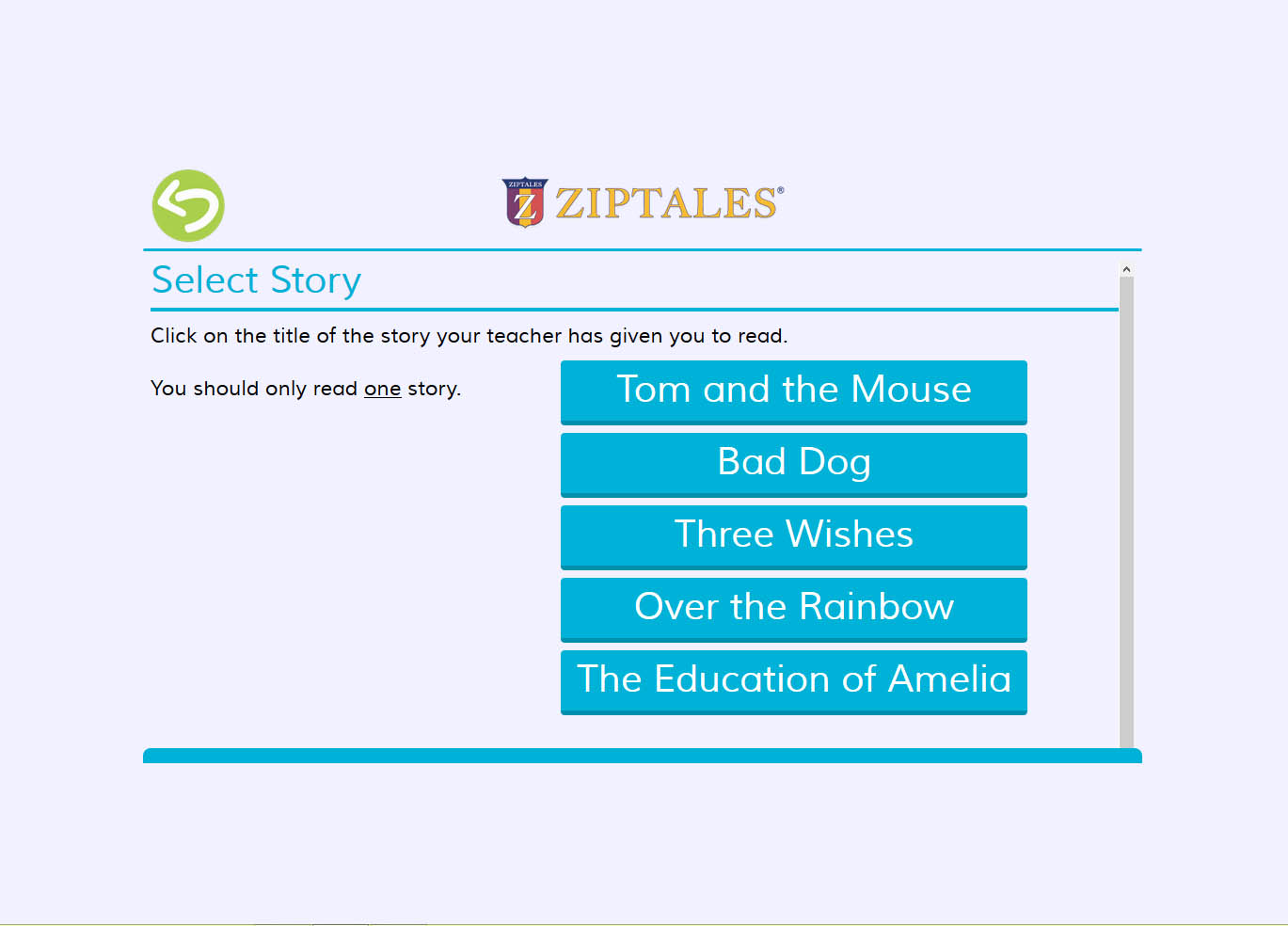
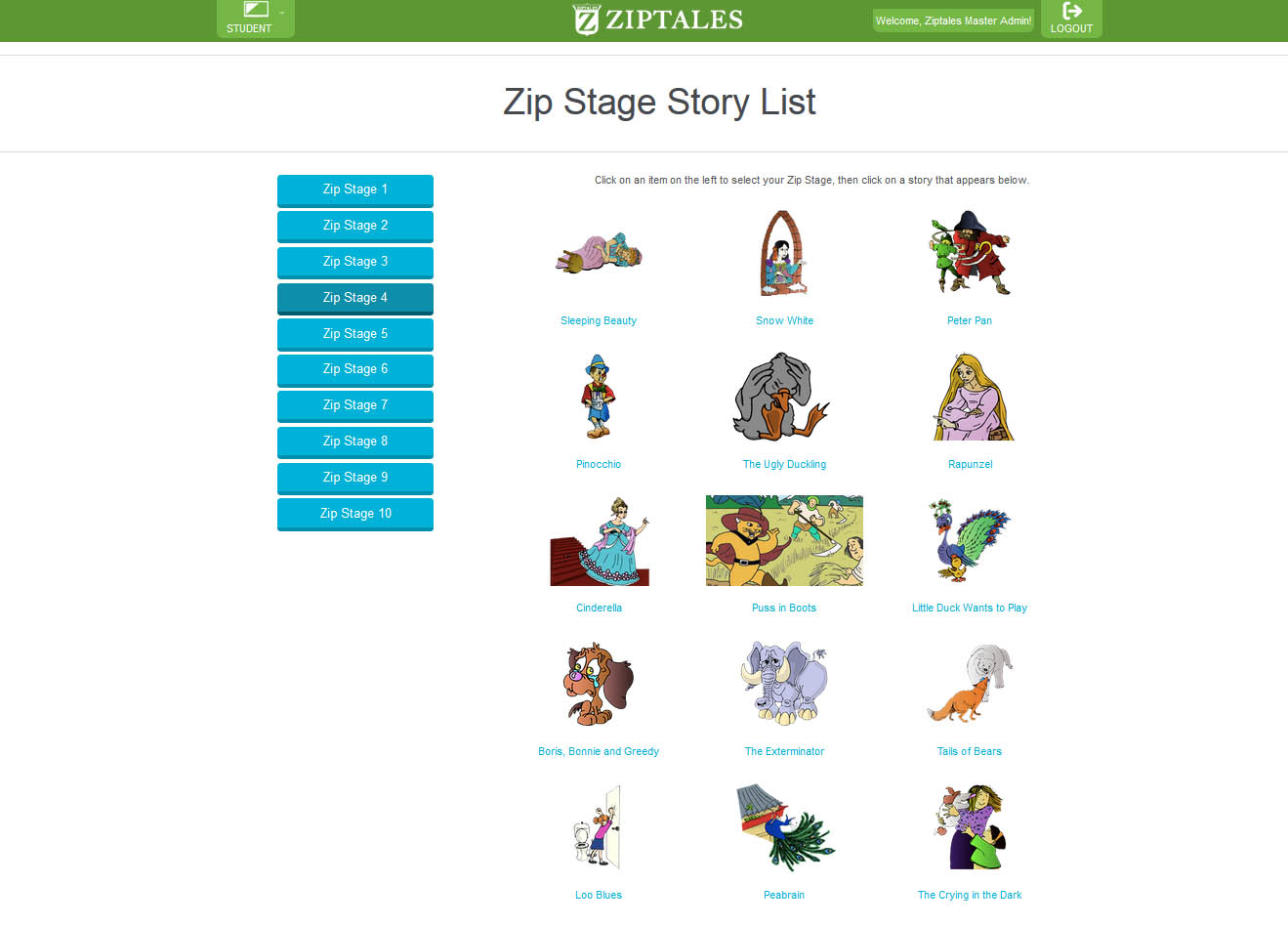
The beauty of this scheme is that it is fully integrated. It marries a (a) test instrument, to set a band, and (b) a full list of likely texts aligned to that band.
The teacher can have confidence that all her students can be operating on ‘individualised’ reading programs, perfectly matched to their abilities. However, the ‘Zip Stage’ is a discreet way of describing a band of reading ability. No student will be embarrassed by any perceived mismatch in year level or sense of failing, yet the scheme is transparent and practical.


Or click here to close and continue on our Australian and New Zealand site.